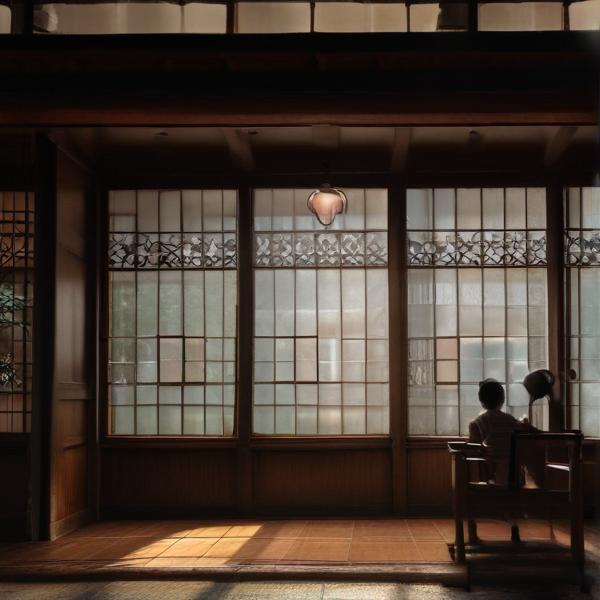基本信息 (Basic Information)
含义与用法 (Meanings & Usage)
中文核心释义 (Core Chinese Meaning): 高而平的平台、台阶,现代也指平台、舞台、电视台等。
英文核心释义 (Core English Meaning): Platform; terrace; stage; also refers to stations like TV station.
象形意义 / 为何这么写 (Pictographic Meaning / Writing Rationale)
文言文释义 (Classical Chinese Meaning)
主要指高台、观台等,与现代意义相近,亦可泛指高地或宫殿。Mainly refers to elevated terraces or viewing platforms, similar to modern meaning; it could also refer to high places or palaces.
深入学习 (In-depth Study)
字源故事 (Origin Story)
字形演变 (Character Evolution)
常用词语和例句 (Common Words & Examples)
舞台 (stage (for performing arts))
演员们在舞台上表演得非常精彩。
Eng: The actors gave a wonderful performance on the stage.
讲台 (podium; lectern)
老师站在讲台上讲课。
Eng: The teacher is giving a lesson from the podium.
电视台 (TV station)
这档节目是由央视电视台制作的。
Eng: This show is produced by CCTV television station.
相关成语 (Related Idioms)
相关成语信息待补充。Related idiom information pending.
多语言翻译 (核心释义) (Translations (Core Meaning))
- French: plate-forme, terrasse, scène
- German: Plattform, Bühne, Station
- Spanish: plataforma, terraza, escenario
- Italian: piattaforma, terrazza, palcoscenico
- Portuguese: plataforma, terraço, palco
- Russian: платформа, сцена, станция
- Arabic: منصة، مسرح، طاولة
- Persian: سکو، سکوی بلند، صحنه
- Dutch: platform, terras, toneel
- Polish: platforma, taras, scena
- Vietnamese: bệ, sân khấu, đài
- Ukrainian: платформа, тераса, сцена
视频学习资源 (Video Learning Resources)
通过以下链接在热门视频网站搜索 "台" 的更多讲解:
Search for more explanations of "台" on popular video sites:
- 在 Bilibili.com 搜索 "台 字源 说文解字" (Search on Bilibili)
- 在 YouTube.com 搜索 "Tai character origin etymology" (Search on YouTube)
网络参考 (Web References for "台") ()
网络内容摘要 (Web Content Summary):
“台”字的基本含义与起源:“台”本意为高的建筑、土堆或平台,后来引申为观赏、办公或表演等用途的建筑物。象形起源方面,早期金文用“㠯”加“口”部件演变而来,最初在金文中并不表达本义,而多用作“以”的通假字。Basic Meaning & Origin of "台": The character "台" originally means a high building, mound, or platform, and later extended to mean structures for viewing, working, or performances. Its pictographic origin comes from adding "口" to "㠯" in early bronze inscriptions, but in ancient times it was mainly used as a phonetic substitute for "以" rather than its original meaning.
- 常见用法:现代汉语中,“台”常用于表示“平台”、“戏台”、“电台”、“台风”等。它还可以用于机构名称(如“中央电视台”)。 Common Usages: In modern Chinese, "台" is used in words like "平台" (platform), "戏台" (stage), "电台" (radio station), and "台风" (typhoon). It also appears in institutional names (e.g., "CCTV" - China Central Television).
- 易混点:初学者需注意“台”与“合”、“吉”等字形相似,但含义和用法不同。 Confusable Points: Beginners should note that "台" looks similar to characters like "合" or "吉", but their meanings and usages are different.
- 成语或扩展:与“台”相关的常见成语较少,更多见于现代词汇和地名/机构名称。 Idioms or Extensions: Idioms containing "台" are rare; it is more often seen in modern vocabulary and place or institution names.
小结:“台”是常用汉字,文化和书写方面皆具代表性,了解其演变有助于掌握相关汉字的结构与含义。 Summary: "台" is a commonly used and culturally significant Chinese character; understanding its evolution helps learners with the structure and meanings of related characters.
注:本次整理的信息有限,暂无更多关于甲骨文或古文详细释义,有兴趣者建议参考专业字源词典进行深入了解。 Note: The above summary is based on limited available information; for detailed ancient script or etymology, consult specialized dictionaries.
汉字"台"的起源、演变过程-汉字字源辞典
汉字字源辞典收录13864条汉字词条,基本涵盖了常见汉字的字源解析,是汉字研究的必备工具。 ... "台"在春秋金文中开始出现,是在㠯上加口旁分化出来的,但不用来表示本义,几乎都用作"以"。 ...
【台,臺,檯,颱,迨,苔】的甲骨文金文篆文字形演变含 - 甲骨文研究网 甲骨文密码字典 在线甲骨文字典研究 - 甲骨文研究网 甲骨文密码字典 ...
Hot Tags: 本网破译的所有甲骨文象形本义全部收录在《多功能汉字甲骨文破译字典》一书中,破解的古诗、竹简等古文作品收录在《新编甲骨文破译案例解析》一书中。 因时间、精力有限,破译的甲骨文象形本义只有少数上传到网站上,对甲骨文感兴趣、想全面了解者可参阅本网所著的这一套 ...
更多图片 (台 More Images) ()
